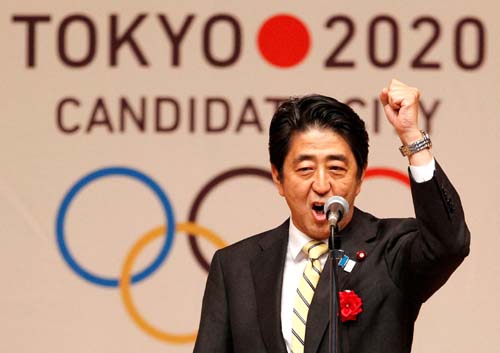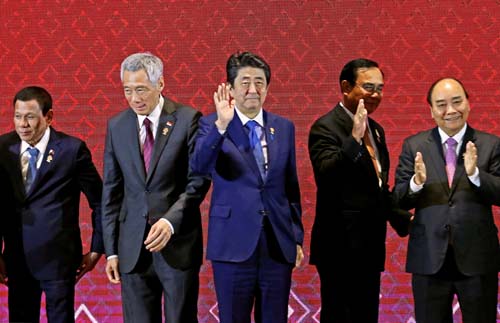
Shinzo Abe’s reforms ensure an unmatched legacy
Takatoshi Ito
The assassination of former Japanese Prime Minister Shinzo Abe is as sad as it is shocking. Gun violence is exceedingly rare in Japan and it seems clear already that both the Nara local police and the Security Police (secret service) were ill-prepared to protect him.
For Japanese of my generation, the tragedy calls to mind US President John F. Kennedy’s assassination in 1963 and the attempted assassination of Abe’s grandfather, Japanese Prime Minister Nobusuke Kishi, who was stabbed in 1960 after his government overcame parliamentary resistance to secure passage of the US-Japan Security Treaty. Under that agreement, the US committed to providing a security umbrella over Japanese territory in exchange for Japan hosting American land, air and sea bases. It was a treaty between unequal friends and one of Abe’s major accomplishments was to develop a more balanced bilateral relationship.
Abe served as prime minister twice, first from September 2006 to September 2007, and then from December 2012 to September 2020, making him the longest-serving prime minister in Japan’s history of democratic governments since 1885. While his first stint leading a government was not particularly successful, his second premiership was politically and economically transformative.
With its revision to Japan’s position on the principle of “collective self-defense,” Abe’s second government cemented ties with the US by making it possible for Japanese forces to protect US forces in the country’s vicinity. Then, by fostering a close golf-buddy relationship with then-US President Donald Trump, Abe managed to preserve a strong US-Japan alliance through the years of “America First” policies. And with his advocacy of a “Free and Open Indo-Pacific,” Abe played a key role in creating the Quad (Australia, India, Japan and the US) and laying the foundations for a structure of peace across the region.
Domestically, Abe launched an economic program, dubbed “Abenomics,” that included three “arrows.” The first arrow was an aggressive monetary policy designed to overcome the Japanese economy’s long bout of deflation. In early 2013, Abe introduced a new inflation-targeting regime and appointed Haruhiko Kuroda as governor of the Bank of Japan. Kuroda was given wide latitude to push inflation toward its target rate through ultra-loose monetary policies.
While his first stint leading a government was not particularly successful, his second premiership was politically and economically transformative.
The second arrow of Abenomics was a flexible fiscal policy, whereby the government would stimulate the economy during downturns and tighten its policies during booms. Abe implemented a large initial stimulus upon becoming prime minister in December 2012 and then followed this up with two increases to the consumption tax rate. When the COVID-19 threat emerged during his final months in office, his government responded with another round of stimulus (and deficit financing). Ultimately, the second arrow thus translated into a sensible countercyclical Keynesian policy, rather than as a justification for piling stimulus upon stimulus.
The third arrow of Abenomics — structural economic reform as growth strategy — was more controversial, with many observers regarding it as unfinished business, if not a failure. To be sure, the Japanese economy’s average growth rate during Abe’s second stint in office was similar to that of the previous 10 years. Under Abe, however, the economy’s growth was more stable, with the country avoiding the kind of stagnation that had preceded his premiership, despite the ongoing decline of the country’s working-age population.

I had the privilege of working with Abe when he appointed me to the Prime Minister’s Council on Economic and Fiscal Policy in 2006. During his first premiership, Abe’s primary focus was on political reforms to make Japan stronger and “beautiful” — a key word in his 2007 manifesto-style book. He did not yet have a strong view on economic policy, so he asked the council to devise an array of policy recommendations that would enable the economy to recover its growth potential.
To that end, we recommended expanding the country’s free trade agreements; transforming Haneda Airport (which is closer to downtown Tokyo than Narita International Airport) to host international flights; increasing the number of foreign workers in Japan; implementing labor market reforms to involve more women and the elderly; reforming public pensions; and consolidating stock and commodity exchanges. But Abe resigned after only one year, so our recommendations were not acted upon.
When Abe returned to power in 2012, he seemed to be much more economically literate and assertive. In pursuing the third arrow of Abenomics, he managed to increase the labor force participation rate for women and the elderly, and relaxed visa requirements to attract more foreign workers and tourists. He also played a central role in negotiating the Trans-Pacific Partnership and its successor, the Comprehensive and Progressive Agreement for Trans-Pacific Partnership, and he pushed through reforms to the Government Investment Pension Fund, reducing its holdings of low-interest Japanese government bonds relative to domestic and foreign equities and foreign bonds.
In other words, Abe used his second stint in office to pick up where our council had left off in 2007. I feel honored to have played a part in these reforms and I doubtless speak for many when I say that Abe’s tragic, heart-wrenching death is a great loss for Japan and the world. His drive for national security and economic reform will be remembered and built upon for years to come. May his soul rest in peace.
The writer is a former Japanese deputy vice minister of finance, is a professor at the School of International and Public Affairs at Columbia University and a senior professor at the National Graduate Institute for Policy Studies in Tokyo
